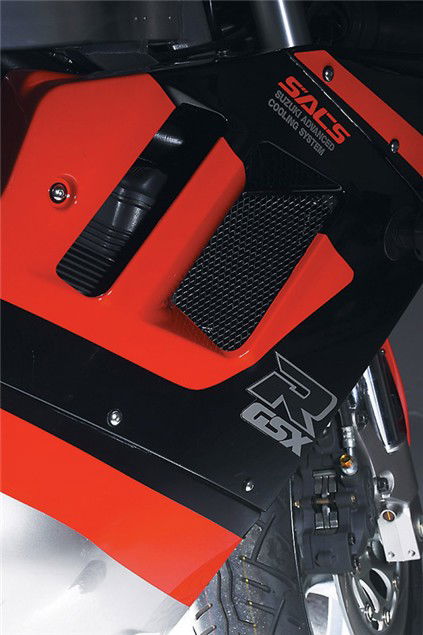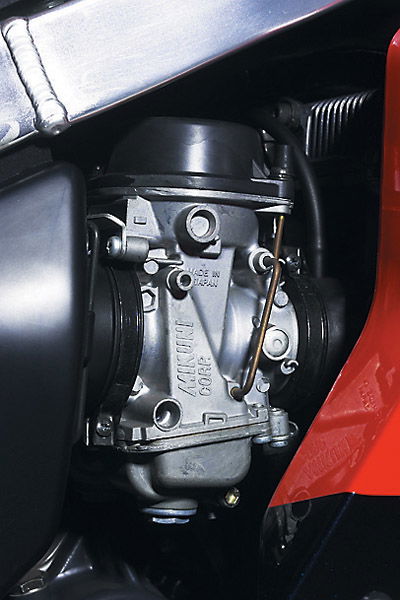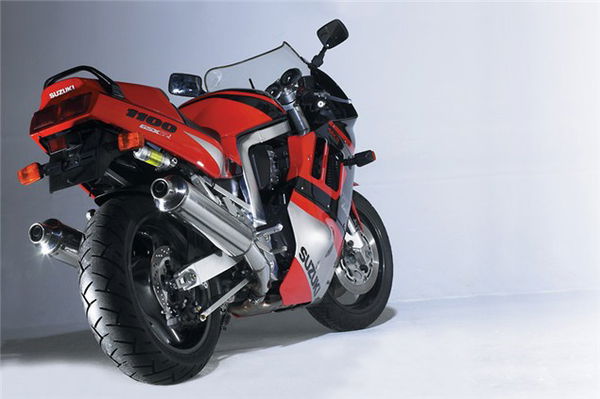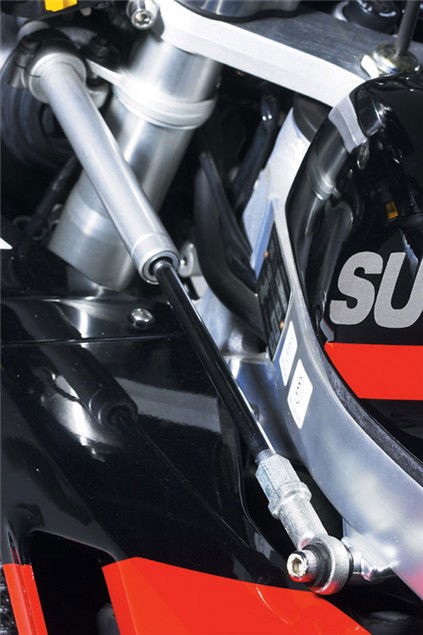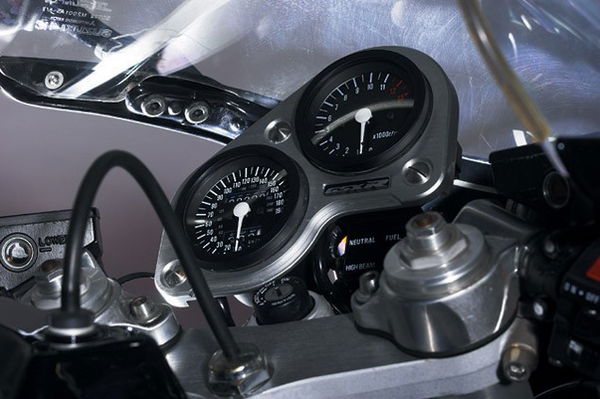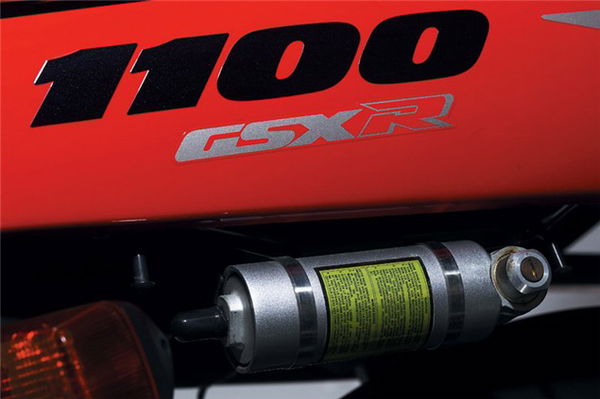Bike Icon: Suzuki GSX-R1100
Like a nightclub bouncer ripped to the tits on bodybuilding steroids, the big Suzuki was not to be messed with. Unless you were rock hard...
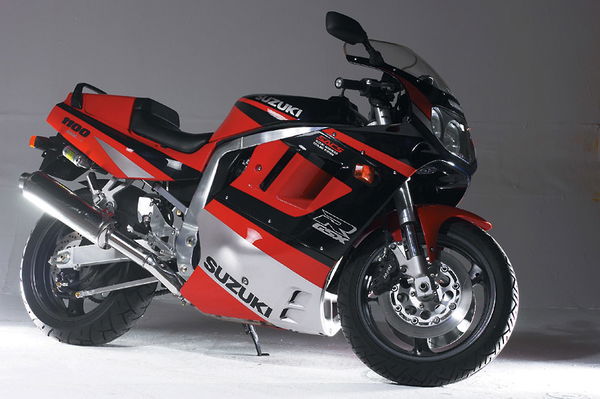

Suzuki's GSX-R1100 has always been thought of as the ultimate hooligan's tool. That's not a slur on the bike itself, rather it's a compliment since it proves that the big Gixxer was so insanely fast, powerful and competent that it satisfied the needs of even the most extreme riders which is why it's still so popular with stunt riders and enthusiasts today.
Suzuki had already redefined the 750cc Superbike class with the launch of the GSX-R750 in 1985 but one year later the firm followed the more is better philosophy and the result was the GSX-R1100G.
The 1100 looked like, and indeed was like, its smaller 750 sibling but it was definitely the head of the family when it came to power. With 130bhp being produced from a bike weighing a relatively light (for the time) 197kg, Suzuki claimed their new machine had the best power-to-weight ratio in the business - 1.51kg per brake horsepower for a showroom price of just £3299.
For their cash, GSX-R1100 buyers got an oil/air-cooled 1052cc dohc, four-cylinder, in-line motor housed in a lightweight double cradle frame made from aerospace quality aluminium and, since their front wheels would be spending so much time in the sky, that was a necessary luxury. Like the 750, the GSX-R1100 featured SACS (Suzuki Advanced Cooling System) as well as the new TSCC (Twin Swirl Combustion Chamber) and a host of acronyms which helped give mucho grunt from 5000 revs.
Weight distribution was perfectly balanced with fifty per cent being placed over each end but the short, 1460mm wheelbase still meant a steering damper was required (and was included as OE) to keep the Gixxer on the grey stuff between the hedges.
After its Laguna Seca press launch, the 1100 became the new sportsbike standard-setter and from that point on its place in the history books was assured. Being capable, at least in later years, of pulling 170mph, it was inevitable that the big Suzuki would become the choice of adrenalin junkies the world over. It was the very uncompromising nature of the GSX-R which endeared it to the kind of rider who wanted thrills over practicality.
The Gixxer had undergone minor changes in 1987 but it was the '89 K model, which featured an even bigger 1127cc engine that really consolidated the bike's reputation as a bit of an animal. To be fair, Suzuki had to do something about the increased competition from bikes like Yamaha's FZR1000 Genesis and Kawasaki's ZX-10 but the general consensus was that the firm went too far and had created a bit of a monster. Former editor of TWO Grant Leonard said at the time "People were riding the things through hedges and doing daft things with them." Not that he did such a thing. Oh no.
Perhaps in reaction to such incidents, Suzuki tamed their beast (slightly) for the start of the new decade by adding a longer swing arm and reducing the steering head angle. But just as one problem was addressed, another was beginning to rear its head: the 1100 was gaining weight while its rivals had all been to biking's celebrity fit club.
Another big change came in early 1993 with the introduction of the water-cooled power, with the bike's capacity reducing down to 1074cc. Up went the wheelbase, as did stopping power with the introduction of six-pot caliper brakes. That year's 1100WP was tipping the scales at a lardy 321kg, fully 24 kilos heavier than the original model and, although power had also increased from 130bhp to (a claimed) 150bhp, the Gixxer was starting to lose to its rivals. The end seemed nigh. Then came a renaissance with the final UK version in 1996, the WT. Finally, it had lost ten kilos and rediscovered some of the mid-range power which had been missing for a few years. Also, a couple of clipped wires and the happy owner could see the full monster 156bhp unleashed.
Sadly, it was too little too late for the UK at least. The competition, headed up by Honda's FireBlade, had moved on too much and, like all great bikes, the GSX-R had simply run its natural course.
For sheer brute power and bad attitude, the 1100 for many, was never going to be bettered. Hence the fact you still see them on the road and at bike shows as rolling objet d'arts. For these people, the GSX-R1100 will always represent nostalgic, hairy-chested, hard rock machismo. It was more than a bike. It summed up an era of excess and it said more about the owner than a psychological profile. Today, if a well-ridden one of these appears in your mirrors, wave them through and then call the men in the white coats. For public safety...
Gary Rothwell's View
No-one anywhere on the planet has abused Suzuki GSX-R1100s quite like Gary Rothwell.
Rothwell started stunt riding in 1992 with a 1989 Slingshot GSX-R1100K and, despite the fact that the Gixxer was already quite long in the tooth, admits it was his first weapon of choice. "I knew the old GS1000 engine was bullet-proof and the 1100 would be the same."
Reliability was important for 33-year-old Rothwell and is perfectly demonstrated by the fact that in ten years of performing, he's only ever had two engines go pop and one of them already had a suspected dodgy engine. The other lasted six years of sustained abuse before going AWOL.
Rothwell's bikes have to handle thousands of wheelies, stoppies, burn-outs and every other madcap stunt the Liverpudlian can dream up. He even set a world record for the most number of people on a bike while pulling a wheelie when he hoisted the Gixxer up with himself and 13 other people in 2000.
For Rothwell, the GSX-R1100 is in many ways the perfect stunt bike even though he now uses a GSX-R1000. "The 1100 didn't seem that heavy and the extra weight meant it didn't break away as easily as something like a GSX-R1000 which can actually be a bit too lively." In fact, the 1100 was so perfectly suited to pulling cunning stunts that the only modification Rothwell had to make was to replace the standard bars with flat bars.
